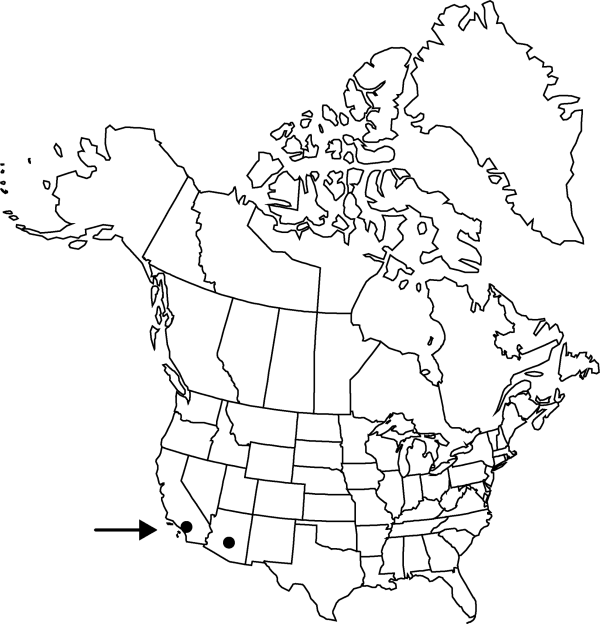Difference between revisions of "Atriplex nummularia"
in T. L. Mitchell, J. Exped. Trop. Australia, 64. 1848.
FNA>Volume Importer |
imported>Volume Importer |
||
| Line 8: | Line 8: | ||
}} | }} | ||
|common_names=Old man saltbush | |common_names=Old man saltbush | ||
| + | |special_status={{Treatment/ID/Special_status | ||
| + | |code=I | ||
| + | |label=Introduced | ||
| + | }} | ||
|basionyms= | |basionyms= | ||
|synonyms={{Treatment/ID/Synonym | |synonyms={{Treatment/ID/Synonym | ||
| Line 28: | Line 32: | ||
|elevation=0-2300 m | |elevation=0-2300 m | ||
|distribution=Ariz.;Calif.;Mexico;Australia. | |distribution=Ariz.;Calif.;Mexico;Australia. | ||
| + | |introduced=true | ||
|discussion=<p><i>Atriplex nummularia</i> is a rather coarse, broad-leaved, vigorous shrub, which has spread from some early introduction from Australia, possibly for use in stabilizing land.</p> | |discussion=<p><i>Atriplex nummularia</i> is a rather coarse, broad-leaved, vigorous shrub, which has spread from some early introduction from Australia, possibly for use in stabilizing land.</p> | ||
|tables= | |tables= | ||
| Line 51: | Line 56: | ||
|publication title=in T. L. Mitchell, J. Exped. Trop. Australia, | |publication title=in T. L. Mitchell, J. Exped. Trop. Australia, | ||
|publication year=1848 | |publication year=1848 | ||
| − | |special status= | + | |special status=Introduced |
| − | |source xml=https:// | + | |source xml=https://bibilujan@bitbucket.org/aafc-mbb/fna-data-curation.git/src/bb6b7e3a7de7d3b7888a1ad48c7fd8f5c722d8d6/coarse_grained_fna_xml/V4/V4_655.xml |
|genus=Atriplex | |genus=Atriplex | ||
|subgenus=Atriplex subg. Atriplex | |subgenus=Atriplex subg. Atriplex | ||
Revision as of 23:18, 27 May 2020
Shrubs, semidioecious, mainly (15–)20–30 dm, with striated twigs. Leaves mostly alternate, short petiolate; blade broadly ovate, rhombic to suborbiculate, (15–)30–65 mm, about as wide, thick, base cuneate, margin sinuate-dentate, apex obtuse to rounded. Staminate flowers crowded in glomerules on short or elongate, interrupted spikes in large paniculate clusters to 20 cm. Pistillate flowers in dense, compound panicles, or axillary, or along staminate panicle branches. Fruiting bracteoles sessile, reticulately veined, rhombic to orbiculate, 5–12(–15) × 5–11 mm, papery all over or thick and corky, margin subentire to coarsely few-toothed. Seeds brown, 2 mm wide.
Phenology: Flowering summer–fall.
Habitat: Sandy coastal bluffs, disturbed sites such as roadsides
Elevation: 0-2300 m
Distribution

Introduced; Ariz., Calif., Mexico, Australia.
Discussion
Atriplex nummularia is a rather coarse, broad-leaved, vigorous shrub, which has spread from some early introduction from Australia, possibly for use in stabilizing land.
Selected References
None.